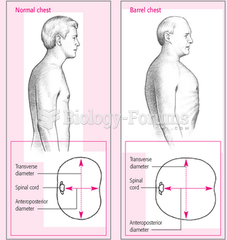|
|
|
It is difficult to obtain enough calcium without consuming milk or other dairy foods.
The first oral chemotherapy drug for colon cancer was approved by FDA in 2001.
If you use artificial sweeteners, such as cyclamates, your eyes may be more sensitive to light. Other factors that will make your eyes more sensitive to light include use of antibiotics, oral contraceptives, hypertension medications, diuretics, and antidiabetic medications.
Studies show that systolic blood pressure can be significantly lowered by taking statins. In fact, the higher the patient's baseline blood pressure, the greater the effect of statins on his or her blood pressure.
More than 30% of American adults, and about 12% of children utilize health care approaches that were developed outside of conventional medicine.







